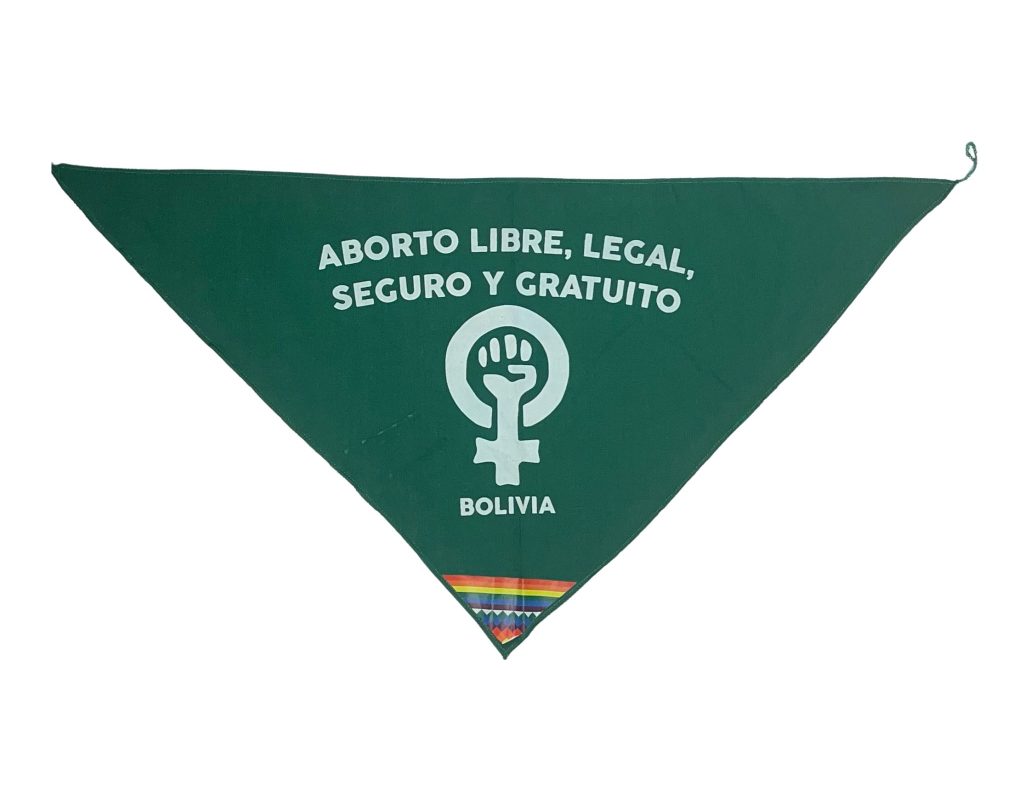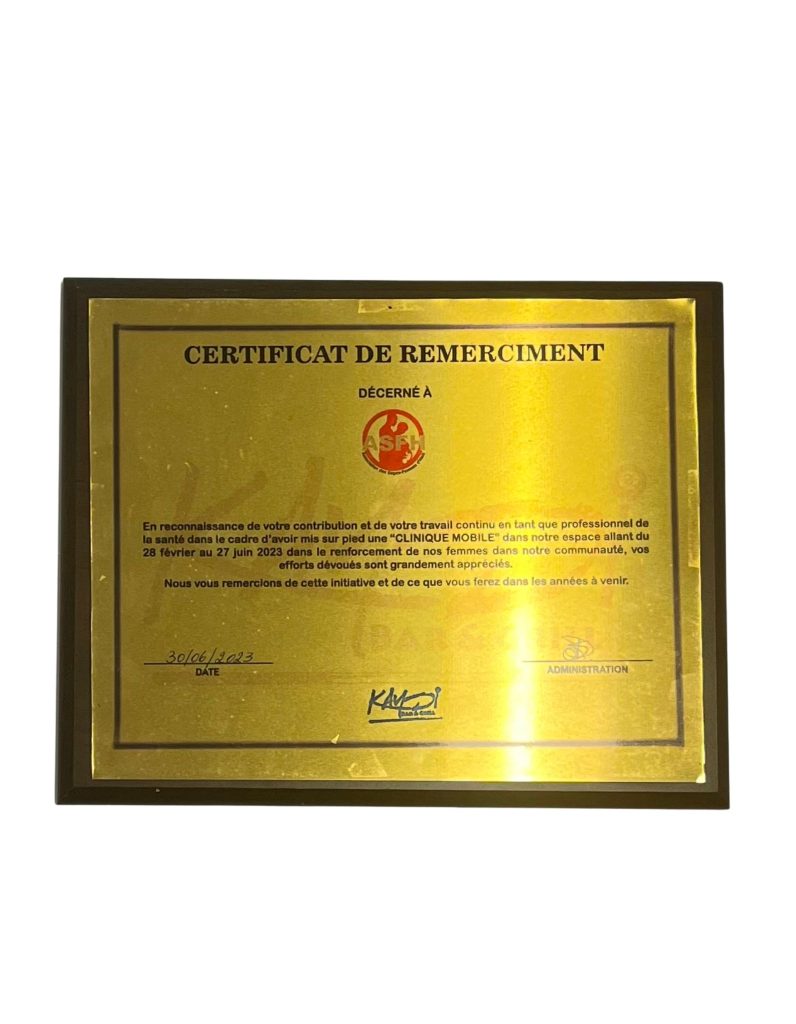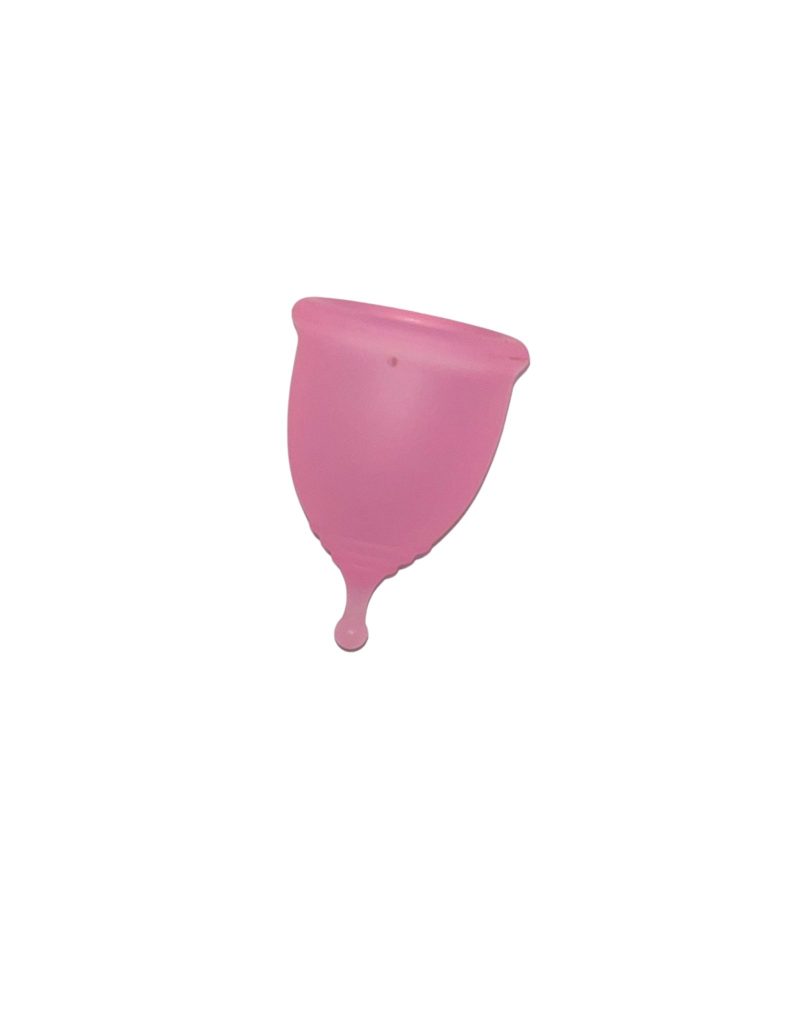Welcome to the #AWorldWhere pop-up musEUm
This digital exhibition aims to foster understanding of sexual and reproductive freedom worldwide while highlighting ongoing struggles.
What does sexual and reproductive freedom mean to you?
We asked this question to young people, women human rights defenders and members of marginalised communities, including LGBTIQ+ people, Roma and young people.
They answered with objects, each accompanied by a story. This digital musEUm showcases these objects and the personal narratives behind them—powerful stories of survival, resilience and hope.

Justyna Wydrzyńska |
Women Human Rights Defender, Poland
Necklace spelling Mife Miso - referring to the pills used for medical abortion
Justyna faced judicial persecution for helping an abuse survivor to access abortion pills
 I wear it every day because I associate it with my cause. After my own abortion in 2006, I realised how hard it was for women and pregnant people to find proper information. It was just the beginning of sending pills to Poland by feminist organisations and nobody knew what abortion pills were. I found the procedure so technically straightforward that I didn't want anybody else to needlessly feel the huge fear that I initially felt. Anti-rights actors want to silence us, but we will continue supporting people no matter what. It affects the whole of Polish society. They will not ban me for this. The support I have gives me strength. It makes me feel braver.
I wear it every day because I associate it with my cause. After my own abortion in 2006, I realised how hard it was for women and pregnant people to find proper information. It was just the beginning of sending pills to Poland by feminist organisations and nobody knew what abortion pills were. I found the procedure so technically straightforward that I didn't want anybody else to needlessly feel the huge fear that I initially felt. Anti-rights actors want to silence us, but we will continue supporting people no matter what. It affects the whole of Polish society. They will not ban me for this. The support I have gives me strength. It makes me feel braver.

Mahmoud Saadawy |
Egyptian SRHR activist and HIV researcher, living in Belgium
HIV treatment
 My experience with HIV treatment has transformed from dealing with complex daily regimens to enjoying bi-monthly injections. Initially, living in Egypt with limited resources, I had to manage a strict schedule, taking multiple pills daily to control the virus. This often led to adherence issues, concerns about drug resistance, and deep stigma whenever I went to get my medication.
My experience with HIV treatment has transformed from dealing with complex daily regimens to enjoying bi-monthly injections. Initially, living in Egypt with limited resources, I had to manage a strict schedule, taking multiple pills daily to control the virus. This often led to adherence issues, concerns about drug resistance, and deep stigma whenever I went to get my medication.
After moving to Belgium, where healthcare infrastructure and funding support advanced therapies, I gained access to recent advancements in HIV treatment. Now, I receive long-acting injectable therapies, with a single dose every two months. This significantly improved my quality of life, reducing the daily pill burden and making it easier to stick to my treatment plan, maintaining effective viral suppression.
Unfortunately, these treatments are still not widely available in countries like Egypt, where economic constraints, limited healthcare resources, and stigma hinder access to basic HIV medications. This disparity underscores the urgent need for global efforts to ensure equitable healthcare for people living with HIV worldwide.

Carmen Gheorghe |
President of E-Romnja, a Roma feminist organisation, Romania
Photo from protest against far-right attacks on Roma women’s rights
 The forced sterilization of Roma women is a recurring theme among extremist politicians in Romania and other European countries. These politicians seek the invisibility or complete erasure of the Roma population from history.
The forced sterilization of Roma women is a recurring theme among extremist politicians in Romania and other European countries. These politicians seek the invisibility or complete erasure of the Roma population from history.
The sign reads: Who is afraid of the Roma woman's womb? This symbolic question arises from historical, collective, and political anger and a demand for justice. It is directed at all racists, abusers, and aggressors who feel disturbed and threatened by our colours, bodies, and fertile wombs.

Dameli Tileshpayeva |
Young advocate for sexual and reproductive health and rights, Kazakhstan
Box in which young people can submit questions about relationship and sexuality during youth-led peer education sessions
 My contribution to the exhibition is a small, unassuming cardboard box, but its significance goes far beyond its simplicity. For years, this box has been a constant presence in the relationship and sexuality education sessions I conduct with young people, especially girls, providing a space where they can finally express what they’ve never had the opportunity to share. In a world that often silences discussions about bodies, sexuality, reproductive health, and personal boundaries, this box has become a safe haven — a quiet, non-judgmental place where they could drop their anonymous notes during or after the lesson.
My contribution to the exhibition is a small, unassuming cardboard box, but its significance goes far beyond its simplicity. For years, this box has been a constant presence in the relationship and sexuality education sessions I conduct with young people, especially girls, providing a space where they can finally express what they’ve never had the opportunity to share. In a world that often silences discussions about bodies, sexuality, reproductive health, and personal boundaries, this box has become a safe haven — a quiet, non-judgmental place where they could drop their anonymous notes during or after the lesson.
Each slip of paper represents more than just a question or a piece of feedback; it holds the weight of a young person’s courage to open up about their insecurities, confusion, and fears. It might be the first time they’ve asked something they were too embarrassed to say at school, or too afraid to ask their parents or teachers: their first menstruation, falling in love, experiencing harassment, exploring their bodies, and many other stories. These notes have revealed the deep concerns they carry about their bodies, their boundaries being crossed, the emotional toll of growing up, and the pressures of navigating puberty.
This box has allowed me to give voice to the voiceless and offer answers where there was previously silence. It’s not just a tool for teaching — it has fostered a sense of community among the youth, showing them that they are not alone in their struggles. The stories and questions that fill this box have become reminders of how crucial it is to provide safe, youth-friendly spaces in discussions about sexual and reproductive health and rights (SRHR).
For me, this box embodies the unity of their experiences. It’s small, but in the context of each session, it may be the only place where these young voices feel truly heard. It stands as a reminder that comprehensive sexuality education isn’t just about imparting knowledge — it’s about listening, empowering, and supporting young people and girls.

Oleksiy |
Survivor of conflict-related sexual violence and founder of Alumni organisation that supports male survivors, Ukraine |
Jacket belonging to a fellow prisoner who shared it with Oleksiy in the basement where they were both detained
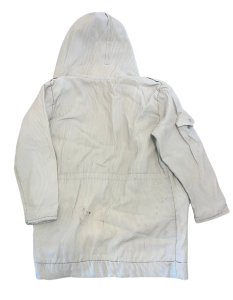
 Oleksiy was held in captivity and survived various forms of torture by the Russian military, including conflict-related sexual violence (CRSV). He is one of more than a hundred men who survived sexual violence during the occupation. Among the types of torture documented against men are forced nudity, genital mutilation, electric shocks including to genitals - most often with wires from a Soviet-era TA-57 military field telephone known as a "Tapik" - and threats of rape or actual rape.
Oleksiy was held in captivity and survived various forms of torture by the Russian military, including conflict-related sexual violence (CRSV). He is one of more than a hundred men who survived sexual violence during the occupation. Among the types of torture documented against men are forced nudity, genital mutilation, electric shocks including to genitals - most often with wires from a Soviet-era TA-57 military field telephone known as a "Tapik" - and threats of rape or actual rape.
In Ukraine, the Office of the Attorney General has reported that more than 300 cases of CRSV against men, women and children have been officially recorded since the full-scale Russia’s war in Ukraine started on February 24th, 2022, with around a third of cases against men and boys. However, the real figures of unreported CRSV cases are likely to be much higher.
International and non-governmental organizations are joining forces with medical institutions to create a consolidated system of assistance to survivors. Oleksiy himself founded an informal network called the Alumni organisation, which provides peer-to-peer support to male survivors, coordinates aid providers, make referrals, develops rehabilitation and psychoeducation programmes, and advocates for survivors’ rights.
The Alumni organisation, together with Dr. Denis Mukwege Foundation, SEMA Ukraine, Assisto project of the Andreev Family Foundation and the Women’s Health and Family Planning Association, is part of a large cohort of organisations in Ukraine that protects survivors’ rights and provides them with assistance and essential services, including sexual and reproductive healthcare.

The Feminist Coalition 28th of September Campaign / Rebellion Collective |
Groups fighting for abortion rights, women’s rights and social justice, Bolivia
A Green Wave scarf, incorporating the LGBTQI+ rainbow as well as the Wiphala, a symbol of indigenous resistance in Bolivia. It brings social movements together in one strong symbol for the region
 The green wave, which emerged from the fervour of the feminist movement in Argentina, has become a global symbol of the fight for the right to abortion. In Bolivia, the Wiphala (a symbol of indigenous resistance) and the flag representing sexual and gender diversity embody our firm resistance against patriarchy, colonialism and capitalism.
The green wave, which emerged from the fervour of the feminist movement in Argentina, has become a global symbol of the fight for the right to abortion. In Bolivia, the Wiphala (a symbol of indigenous resistance) and the flag representing sexual and gender diversity embody our firm resistance against patriarchy, colonialism and capitalism.
By merging these causes in our street mobilizations and political advocacy efforts, we have created a green scarf that, beyond its association with the right to abortion, incorporates the Wiphala and the rainbow colours. This scarf thus becomes the declaration of an intersectional feminism that challenges all dynamics of economic, social and cultural oppression, connecting all causes in a spirit of sisterhood, diversity and emancipation.

The Association of Midwives of Haiti (ASFH) |
Local organisation working to reduce the maternal and infant mortality rate, Haiti
Certificate of Appreciation from the community for the Association’s work
 In a community devastated by violence, where hope seemed lost, the Association of Midwives of Haiti (ASFH) has managed to bring a glimmer of hope to the Croix-des-Bouquets municipality. Despite imminent dangers, the midwives braved insecurity to provide essential care to women and girls, often the first victims of crises. Turning ruins into places of healing, they set up mobile clinics, offering prenatal and gynecological consultations, contraceptive services, and HIV and syphilis testing. Thanks to their dedication, lives were saved, and families regained a semblance of safety and dignity. This certificate, humbly presented by the grateful community, is much more than a piece of paper; it is a testament to indomitable courage and unwavering commitment to the health of the most vulnerable.
In a community devastated by violence, where hope seemed lost, the Association of Midwives of Haiti (ASFH) has managed to bring a glimmer of hope to the Croix-des-Bouquets municipality. Despite imminent dangers, the midwives braved insecurity to provide essential care to women and girls, often the first victims of crises. Turning ruins into places of healing, they set up mobile clinics, offering prenatal and gynecological consultations, contraceptive services, and HIV and syphilis testing. Thanks to their dedication, lives were saved, and families regained a semblance of safety and dignity. This certificate, humbly presented by the grateful community, is much more than a piece of paper; it is a testament to indomitable courage and unwavering commitment to the health of the most vulnerable.

Ernestine Pastorello and Ranunculus Market, 2023-2024, Berlin, Germany |
Red Light Utopia" quilt, Fabric, batting, thread, beads
 Globally speaking, Berlin is a comparatively great place to be a sex worker. After surviving 6 years working under full criminalization in the US, the opportunity to work in a bordello –- surrounded by others, no longer in isolation –- allowed me a degree of safety I had never felt before. Saf[er] workplaces must close if the Nordic Model comes to Germany, so we must continue to fight to finally attain equal rights, optimal health, and self-determination. We still have to carry a “Whore’s ID” (a nearly identical requirement existed under the Nazis), which infringes upon our right to privacy but doesn’t grant us the resources we need –- such as free, accessible, and anonymous STI testing. All of these dreams are sewn into this imagined hooker-owned bordello in a future Red Light Utopia with the magical expectation that, by stitching them into being, they will come true.
Globally speaking, Berlin is a comparatively great place to be a sex worker. After surviving 6 years working under full criminalization in the US, the opportunity to work in a bordello –- surrounded by others, no longer in isolation –- allowed me a degree of safety I had never felt before. Saf[er] workplaces must close if the Nordic Model comes to Germany, so we must continue to fight to finally attain equal rights, optimal health, and self-determination. We still have to carry a “Whore’s ID” (a nearly identical requirement existed under the Nazis), which infringes upon our right to privacy but doesn’t grant us the resources we need –- such as free, accessible, and anonymous STI testing. All of these dreams are sewn into this imagined hooker-owned bordello in a future Red Light Utopia with the magical expectation that, by stitching them into being, they will come true.
L.C., a mother who experienced obstetric and gynaecological violence |
Letter sent by the mother to her doctor after the birth of her son
“My son, L. was born on X August 2012, at 12h06 at the X hospital. It was a very hot day.
I was prepared and very brave, you stole part of his birth from me, you violated me, and I need to tell you.”
So begins my letter to the gynaecologist who oversaw the delivery of my first child. 10 years after that traumatic experience, and after giving birth once more, this time through a respectful birth filled with love and kindness which healed some of the pain, I found the courage to face that episode of obstetric violence.
“But you can't rewrite history.
Telling you this won't give me back this moment, nor will it soothe my scar.
But in the end, I'm relieved that I am doing it. […]
Your way of doing things, at least at the time, was violent.
I hope that you will have had the humility to read me to the end, and to remember this. And perhaps to change these harmful practices in the future.”
More on IPPF EN's work on obstetric and gynaecological violence.
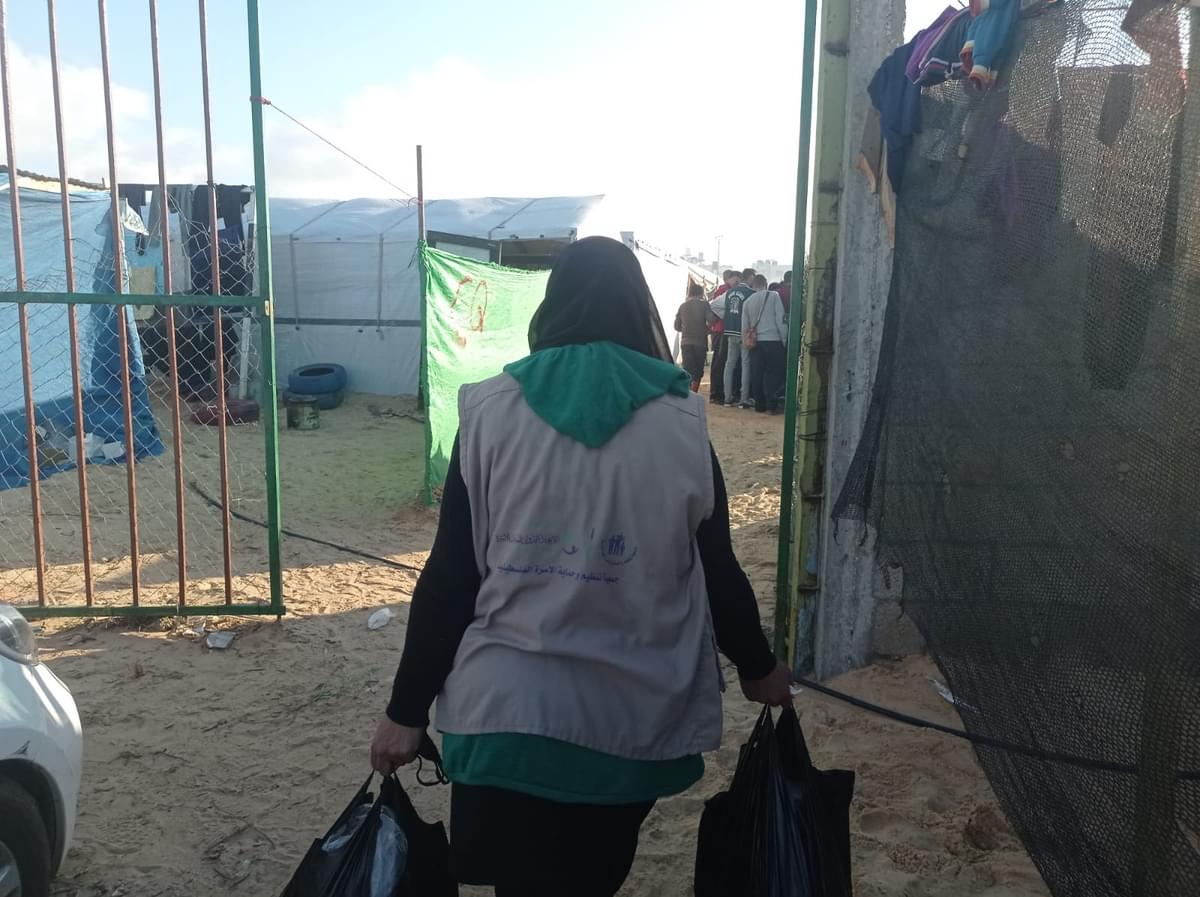
Wafaa J Abu Hashish |
Service provider with the Palestinian Family Planning and Protection Association (PFPPA) | Wafaa’s vest, worn during her humanitarian work providing healthcare services
 As a Palestinian Gazan woman, providing sexual and reproductive health services in the Gaza Strip has always been challenging. But even more so for the past 17 years, since the Gaza Strip has been under complete blockade from the outside world and is often referred to as the “world’s largest open-air prison”.
As a Palestinian Gazan woman, providing sexual and reproductive health services in the Gaza Strip has always been challenging. But even more so for the past 17 years, since the Gaza Strip has been under complete blockade from the outside world and is often referred to as the “world’s largest open-air prison”.
Since 7 October 2023, I, like hundreds of thousands of other women in Gaza, have had my house bombed, and I’ve been internally displaced over six times with my family. We have been desperately seeking shelter in hospitals, UNRWA schools, tents, and even staircases of people’s homes. Many times, we have faced having no access to water, hygiene materials, clean toiletries or food to keep my children’s bellies full.
I have feared getting my period and not having any menstrual pads available, and not being able to find contraceptives to avoid an unwanted pregnancy. I am one of many women who had a miscarriage whilst fleeing from one area to another, not even realising I was pregnant, and was unable to access safe medical care when I most needed it. I know what it means to be a woman in such a situation, the importance of SRH services being accessible and available, and what different this can make. I wear my PFPPA humanitarian vest with pride when I visit adolescent girls, women, new mothers, and young babies, delivering whatever care I can to them with the limited supplies I have. Along with my team from PFPPA, I am committed to doing so now more than ever before.

Reagan Kulubya Leonald |
Young advocate for sexual and reproductive health and rights, Uganda |
Sweater

I vividly recall the day I helped Florence in math class when I was just 12 years old. As Florence walked to the front of the class, I noticed a conspicuous blood stain on the back of her dress. Sitting behind her desk, it was evident that she had started her period.
Growing up, I had always been curious about the conversations my mother had with my sister and female cousins when they visited. When I finally pieced together the topic of their conversations, I was surprised to find that though menstruation is something half the world experiences, it is so rarely spoken about openly.
That day in math class, I removed my favourite sweater and discreetly handed it to Florence to tie around her waist. Once she had covered the stain, I could see the relief in her eyes. Since then, I have become an ardent advocate for menstrual hygiene, wellbeing, and menstrual dignity. I initiated a campaign at school to raise awareness and break the stigma surrounding periods. As the culture in our school began to shift, I noticed a significant change in how girls and boys interacted with each other. The girls felt more comfortable, the boys showed more empathy, the school administration installed sanitary product dispensers in the bathrooms, and teachers talked about menstruation in the presence of both boys and girls.
My story exemplifies the critical role males can play in breaking the silence and stigma surrounding menstruation. Through my efforts, I hope to create a world where menstruation is no longer stigmatised, and everyone can thrive without fear of shame or ridicule.

Dr. Tanaya Narendra (Dr. Cuterus) |
Sexual Health Educator and Doctor, India |
Menstrual cup
 As a sexual health educator and doctor practising in India for over a decade, I have worked with and interacted with girls and women all over the country. In my experience, a menstrual cup is a tiny but very significant revolution that has pushed not just the period conversation forward, but also body literacy. Combining friendliness, practicality, and comfort, the medical-grade silicone menstrual cup offers flexibility to the wearer in a way that is historically unprecedented.
As a sexual health educator and doctor practising in India for over a decade, I have worked with and interacted with girls and women all over the country. In my experience, a menstrual cup is a tiny but very significant revolution that has pushed not just the period conversation forward, but also body literacy. Combining friendliness, practicality, and comfort, the medical-grade silicone menstrual cup offers flexibility to the wearer in a way that is historically unprecedented.
But its true power lies in fostering body literacy. Understanding your flow and cycle is empowering, promoting better reproductive health choices. The menstrual cup isn’t just a period product; it’s a badge of reproductive freedom and autonomy.
How to build an inclusive feminist Europe and world
The European Parliament has a longstanding legacy as the EU institutions’ strongest defender of these values. We urge Members of the European Parliament to continue upholding and advancing them in the 2024-2029 legislative term.
More about our asks.
See below some higlights from our launch event in the European Parliament.
About the organisers
IPPF EN, DSW and EPF are advocates for an inclusive world where equality, justice and freedom are the reality for all. We envision an inclusive feminist Europe that champions gender equality, women’s human rights, and sexual and reproductive health and rights (SRHR) as core EU values.
Illustrations by: Yessiow
With the support of
















